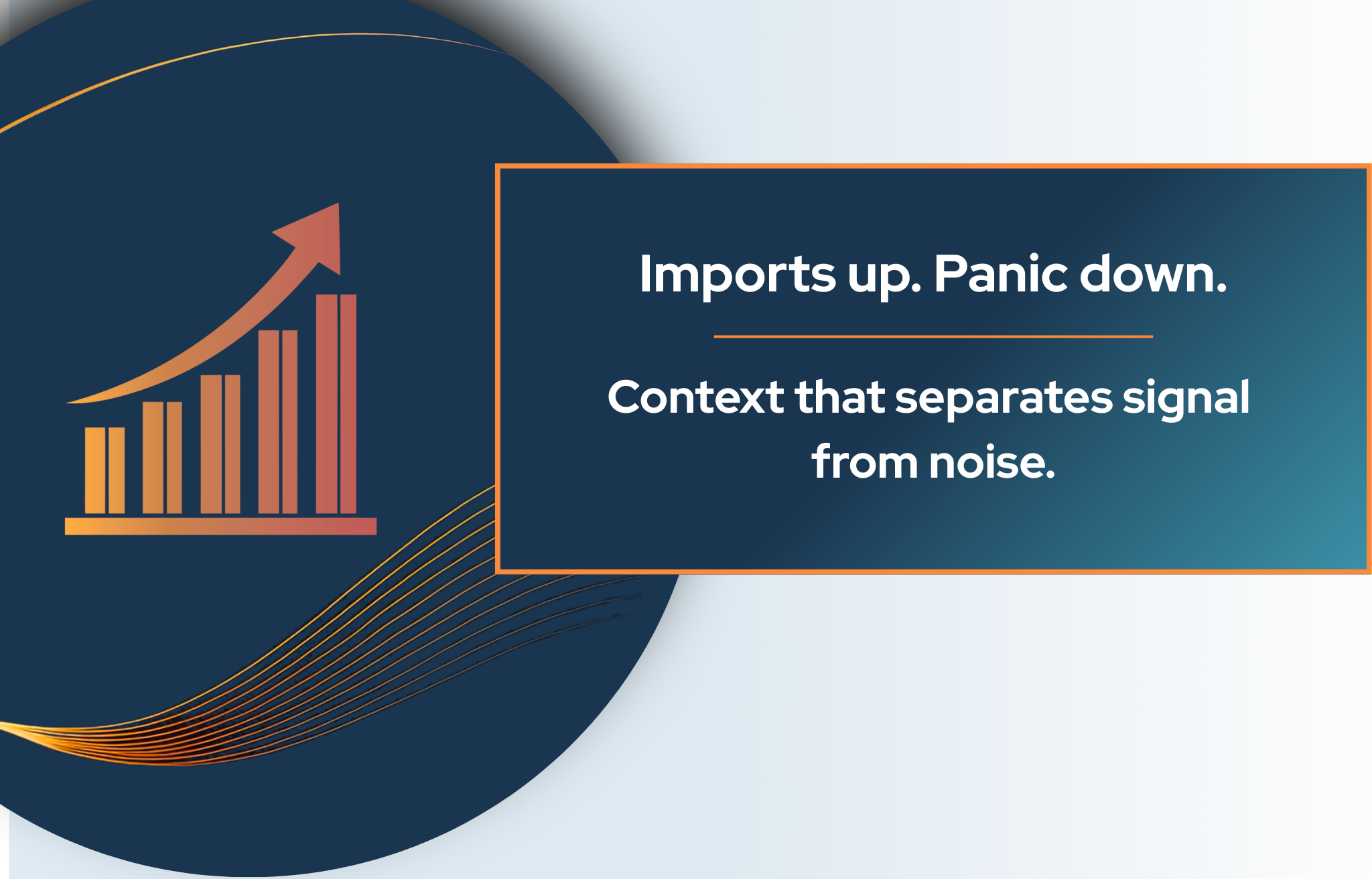A rising trade deficit is not necessarily bad

By Chris Chmura |
Some of the current administration’s actions such as tariffs, laying off federal workers, and slashing spending in some agencies seem arbitrary and haphazard. Whether or not you agree with these policies, as an economist I see the policies as a means to potentially address long-standing structural issues with the U.S. economy.
We Americans like to purchase goods and services, especially cheap goods produced in low-cost countries. The trade deficit was $2.0 billion in January 1992 and $78.3 billion July 2025.
A rising trade deficit is not necessarily bad. When we purchase goods and services from foreign companies we pay in dollars, and the recipients use those dollars to buy things from the United States. That includes investing in our bond market. In turn, the federal government can use those funds to invest in domestic projects such as improvements in roads, bridges, airports, and education.
However, a prolonged trade deficit may increase the dependency of the economy on foreign countries. This is especially serious if high foreign dependency occurs in critical manufacturing and technological sectors. In addition, a large trade deficit will also add to national debt, which will be analyzed later in this column.
Tariffs are aimed at reducing the trade deficit. If they do, that would be a good outcome for long-term growth.
Related to the trade deficit, a more serious threat to long-term economic growth is the unchecked rise of national debt. While the current trade deficit can add to the national debt, the imbalance between national savings and expenditures also plays a large role, because government spending has ballooned over the past couple of decades. If the United States were an emerging economy, such a high budget deficit and debt would lead to a weakening currency. Given our nation’s relatively good growth and political stability, the dollar remains strong so far.
Reducing federal debt would also help reduce our dependence on foreign investment. According to the Congressional Budget office, federal debt was 6.6% of GDP in 1900. It rose to 106% in 1946 to support World War II but fell steadily to 23% in 1974.
After the financial crisis of 2008, federal debt rose to almost 80% of GDP. During the COVID-19 economic lockdown, debt jumped to 97% of GDP in 2022.
The CBO projects federal debt to rise to 156% of GDP in 2055. The long-term projections are based on legislation enacted as of January 6, 2025. It does not include “…actions and decisions affecting immigration, tariffs, and other policy areas” according to the CBO.
If debt as a percentage of GDP continues to rise, it could cause long-term interest rates to move higher if foreign investors question our nation’s ability to pay back that debt.
When presenting an outlook on the economy, the audience often asks me when the federal deficit will have an adverse effect on the economy.
I usually remind them of Ross Perot who ran for president in 1992 as an independent and elevated national debt as an issue when it was 46% of GDP. His charts became known as the “hockey stick” because of the sharp rise in debt he was expecting.
Back then and today, investors did not lose faith in the nation’s ability to pay back its debt; but that’s not to say that some unexpected watershed event will impact that faith.
Subscribe to the Weekly Economic Update
Subscribe to the Weekly Economic Update and get news delivered straight to your inbox.











